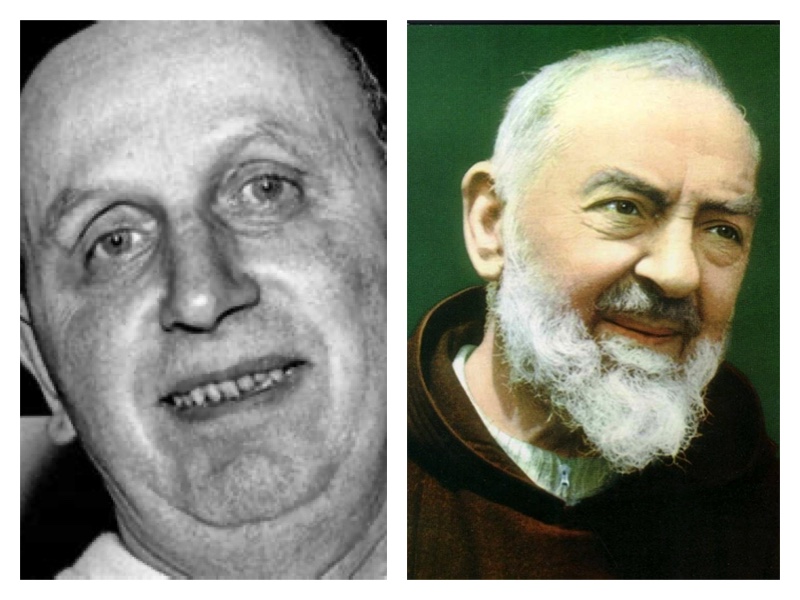We traditionalists often use the term “Remnant Church” to refer to other traditionalist Catholics. Similarly, we may use terms against the modernists like “parallel church” or “false church” or “eclipsed church” or “counterfeit church.” Of course, we all know that at the end of the day, that there can be only one Church, for Christ can have only one spouse, the Catholic Church: “Husbands, love your wives, as Christ loved the Church and gave Himself up for her, that He might sanctify her, having cleansed her by the washing of water with the word, so that he might present the Church to Himself in splendor.”—Eph 5:25-27a.
Archbishop Viganò uses the terms “parallel church” and “eclipsed church:”
“It is no accident: what these men affirm with impunity, scandalizing moderates, is what Catholics also believe, namely: that despite all the efforts of the hermeneutic of continuity which shipwrecked miserably at the first confrontation with the reality of the present crisis, it is undeniable that from Vatican II onwards a parallel church was built, superimposed over and diametrically opposed to the true Church of Christ. This parallel church progressively obscured the divine institution founded by Our Lord in order to replace it with a spurious entity, corresponding to the desired universal religion that was first theorized by Masonry.”—Archbishop Viganó
“The Church of Christ – which not only subsists in the Catholic Church, but is exclusively the Catholic Church – is only obscured and eclipsed by a strange extravagant church established in Rome, according to the vision of Blessed Anne Catherine Emmerich. It coexists, like wheat with the tare, in the Roman Curia, in dioceses, in parishes.”—Archbishop Viganó
Osservatore Romano explains that “a different church” is being created by the Council and the synod:
An obvious objection to the above quotes from AB. Viganò would be that Christ would never let his Church (or papacy) bifurcate into two. But amazingly, the progressives are saying that they are attempting just that. Archbishop Georg Gänswein spoke of how Pope Benedict and himself fabricated an “expanded Petrine Office” as seen in Aleteia. Even Osservatore Romano now reveals that the “synod on synodality” lines up exactly with what Fr. Yves Congar said of Vatican II: “There is no need to create ‘another church’, but to create a ‘different church.’”
But the last above quote is a deceitful lie, for traditionalists and progressives alike both know that if you attempt to create “different church,” you are clearly creating “another church.” This is an impossibility, since Jesus Christ can only have one spouse—one Catholic Church: “Wives, submit to your own husbands, as to the Lord. For the husband is the head of the wife, even as Christ is the head of the Church, His body, and is Himself her Savior.”—Eph 5:22-23. Thus, a “different church” (with changed doctrine and changed liturgy) is obviously a “false church.” Fr. Gabriele Amorth, former exorcist for Rome, recounts that Padre Pio (see top right picture) once said to him: “You know, Gabriele? It is Satan who has been introduced into the bosom of the Church and within a very short time will come to rule a false Church.’”
The silver lining of all of this synodality is that it will probably destroy the last vestiges of orthodoxy in the Vatican-II-sect, meaning that the last thing standing in the one Catholic Church founded by Jesus Christ will be tradition.
Bl. Catherine Emmerich also prophesied about a “false church:”
“I saw also the relationship between the two popes. . . I saw how baleful would be the consequences of this false church. I saw it increase in size; heretics of every kind came into the city [of Rome.] The local clergy grew lukewarm, and I saw a great darkness…”—Bl. Catherine Emmerich on the 13th of May 1820.
“Then the vision seemed to extend on every side. Whole Catholic communities were being oppressed, harassed, confined, and deprived of their freedom. I saw many Churches closed down, great miseries everywhere, wars and bloodshed. A wild and ignorant mob took violent action. But it did not last long.”—Bl. Catherine Emmerich on the 13th of May 1820.
“When the Church had been for the most part destroyed, and when only the sanctuary and altar were still standing, I saw the wreckers enter the Church with the Beast. There they met a Woman of noble carriage who seemed to be with child because she walked slowly. At this sight, the enemies were terrorized, and the Beast could not take but another step forward. It projected its neck towards the Woman as if to devour her, but the Woman turned about and bowed down [towards the altar], her head touching the ground. Thereupon, I saw the Beast taking to flight towards the sea again, and the enemies were fleeing in the greatest confusion…. Then, I saw in the great distance great legion approaching. In the foreground I saw a man on a white horse. Prisoners were set free and joined them. All enemies were pursued. Then, I saw that the Church was being promptly rebuilt, and she was more magnificent than ever before.”—Bl. Catherine Emmerich in the autumn of 1820.
